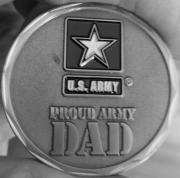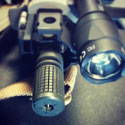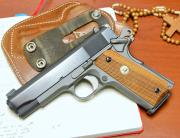In a recent thread discussing the proposed changes to the IDPA rule book I remarked that tactics are fluid and change over time. What was considered good yesterday maybe frowned upon tomorrow. Since shooting while moving is such an important part of IDPA my thoughts focused there and that got me to thinking about recent posts on Dave Spaulding’s BLOG concerning shooting on the move. Then I listened to Tom Givens on ballistic radio concerning the side step. So stay with me as I work through my thoughts.
Shooting on the move: I have always embraced the importance of this skill to the point that not only is it part of my training program but it is part of our Q course. But how important is it.
Larry Vickers feels that it is an extremely important skill. His thoughts can be found here. http://vickerstactical.com/tactical-...g-on-the-move/
Mr. Vickers “Been there done that” credentials are impeccable.
Yet Dave Spaulding questions its importance in the following BLOG posts:
http://www.handguncombatives.com/blo...6b71fd-27.html &
http://www.handguncombatives.com/blo...a3c9e9-38.html
Dave in his first post references Paul Howe’s thoughts (a respected “Been there done that” type as well). His thoughts start on page 4 here: http://www.combatshootingandtactics....real_fight.pdf
In Dave’s second post he references Nir Mamam who if you except his resume is also a “BTDT” person. Nir’s thoughts can be found here: http://www.handguncombatives.com/res...rticle2013.pdf
While I have carried a gun for 35 plus years and have had to draw it on two occasions fortunately I haven’t been in the crucible like these gentlemen. But through my limited experience both carrying a weapon and as a trainer I can see the logic in Dave Spaulding, Paul Howe & Nir Mamam’s points. Their thoughts are that if you are moving it is probably to cover and you are best served by doing that as fast as possible by not trying to add making accurate shots at the time. Similarly if you are shooting you are best served to do that in the best manner possible and that is by standing still. All three have a great deal of operational experience and did not just think this stuff up on the “Square Range”.
With regards to the side step, when I was first introduced to this technique it was purported to be a training tool to help our students to think movement and to keep their feet from being glued to the ground. It slowly seemed to morph into a “Tactic” which was then poopooed as useless by some in the training community. I recently was listening to Tom Givens being interviewed by our own Sparks2112 on Ballistic radio. Everyone here is familiar I’m sure with Mr. Givens and his student’s record in gun fights. It seems the only ones who have lost failed to follow rule number one, Have a Gun. This is not a comment on them as I am not familiar with the circumstances and there may have been a valid reason to be unarmed at the time such as the law. What I found interesting is that Mr. Givens talks about keeping training simple and how a side step during the draw is effective. He has actual video footage of a student’s gunfight to support his thoughts. The podcast of his interview can be found here: http://ballisticradio.com/2013/05/14...0-may-12-2013/
Given today’s training environment and that organizations training budgets are constantly being squeezed simplifying one's training curriculum to concentrate on effective techniques has great appeal.
Thoughts?




 Reply With Quote
Reply With Quote






